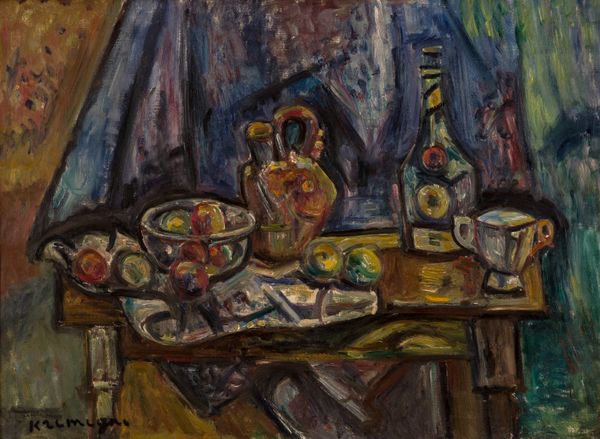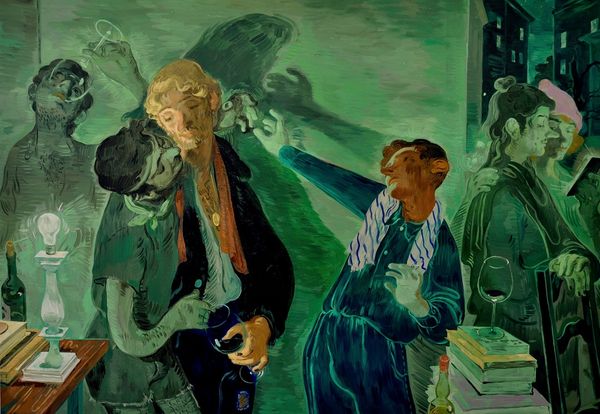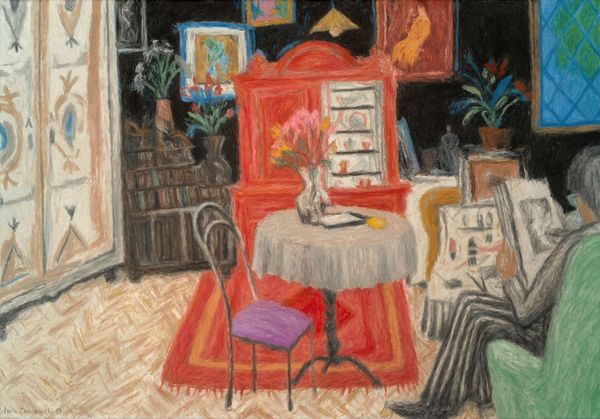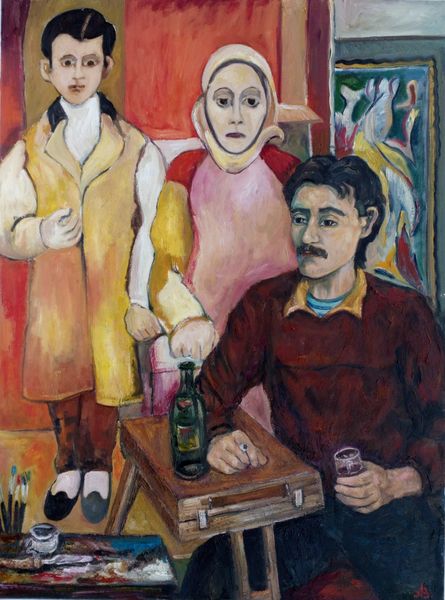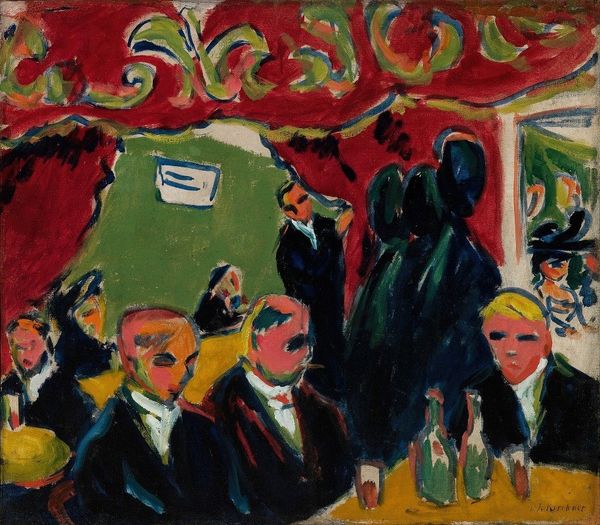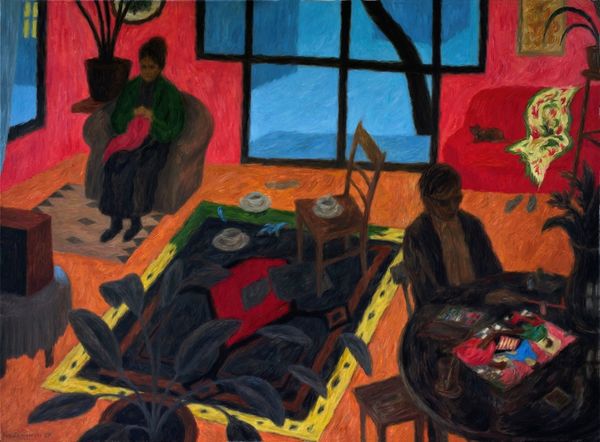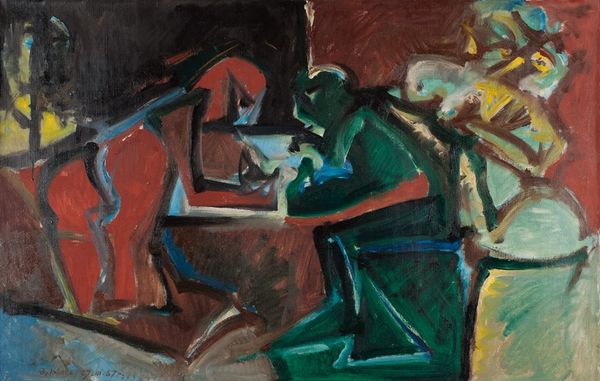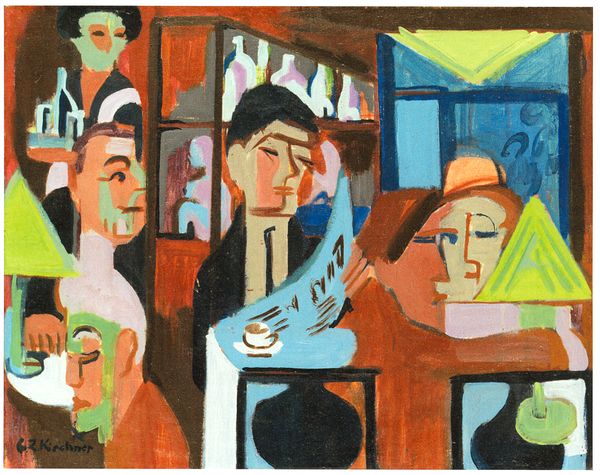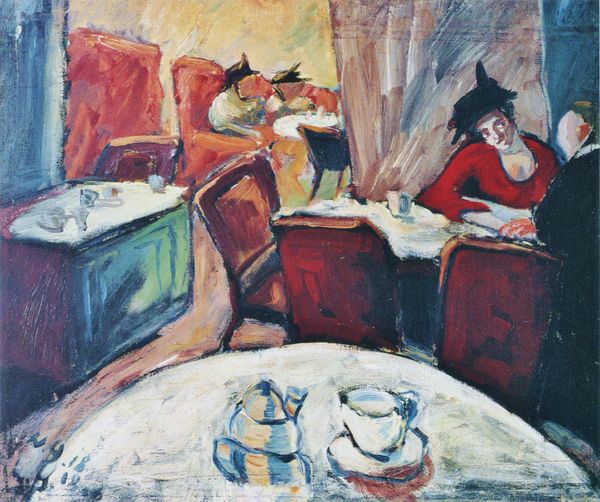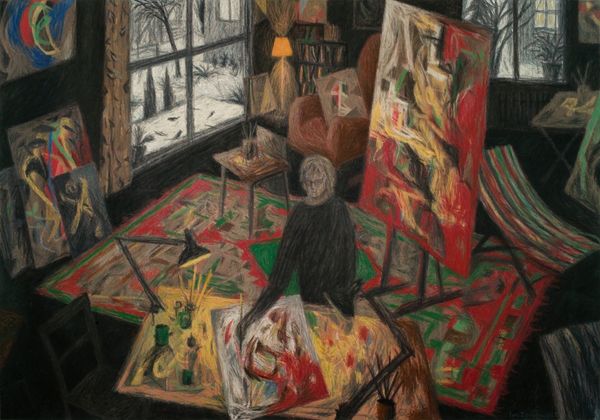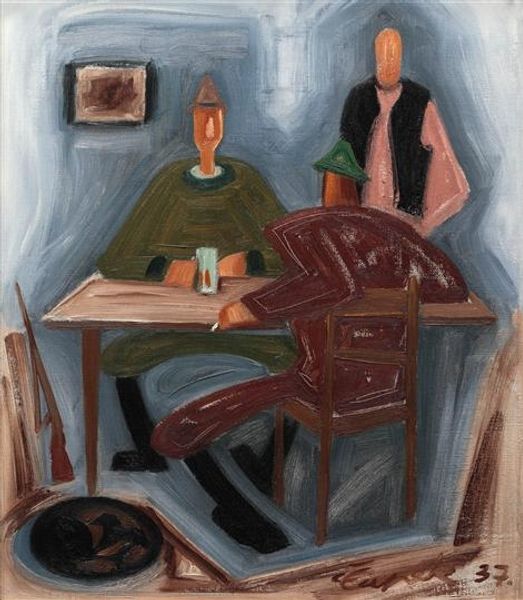
Copyright: Public domain
Editor: Walter Gramatté's "Drinker," created in 1922 using oil paint, presents such a striking scene. I’m immediately struck by the contrasting figures – one seemingly celebratory, the other in distress, within the same space. What do you see in this piece that helps us unpack its deeper meaning? Curator: This artwork screams Expressionism! I’m immediately drawn to the exploration of internal conflict, and how it reflects the fractured societal landscape of post-World War I Germany. The painting pushes us to consider how societal pressures impact individual well-being. Notice the claustrophobic space, the heightened emotion, the distorted figures—the overall intensity. How do you think this speaks to the anxieties of the time? Editor: I see what you mean! The setting almost feels like a stage for a psychological drama. Is it possible the artist intended to comment on escapism through drinking, perhaps a coping mechanism within a disillusioned society? Curator: Absolutely! It portrays a space of refuge, albeit a turbulent one. The figures aren't simply drinking; they are immersed in an act deeply influenced by socio-political instability and existential despair. This era experienced profound shifts in power and belief systems – and such Expressionistic pieces gave form to these anxieties, wouldn’t you agree? How does knowing the context influence how you feel about the individual portrayed in the painting? Editor: Definitely, viewing this through a historical lens allows me to connect with it more deeply, it feels less like a simple genre painting, and more of a time capsule of the collective psyche of an era. Thanks! Curator: It's an ongoing process of discovery! Placing art in dialogue with its historical and cultural background provides so much more insight.
Comments
No comments
Be the first to comment and join the conversation on the ultimate creative platform.
